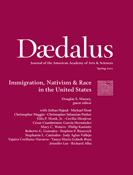By George Fishman
Summary
The Immigration Act of 1924 ushered in a four-decade-long Great Pause in mass immigration. This allowed the United States to assimilate the 20-plus million immigrants who arrived during the “Great Wave” that had begun in the 1880s. And the Act fostered a national economic climate conducive to the flowering of the American Dream, especially for Black Americans. Economists have concluded that from 1940 to 1970, largely paralleling the Great Pause, the average real earnings of white men rose by 210 percent and those of Black men rose by 406 percent.
Not only “progressives”, “liberals”, “conservatives”, and “racists” supported restrictionist policies. So did many Black leaders. A leading Black newspaper concluded that the dramatic decrease in immigration during the First World War “gave [Blacks] the opportunity to get a foothold in the economic world”, but that “there have been many grave doubts about their ability to keep this foothold when fierce competition set in again”. Another proclaimed that the war “showed us just how keen a competitor cheap European labor had been for” Black workers.
Roy Beck, founder of NumbersUSA, recently set forth an audacious hypothesis that the 1924 Act “was the greatest federal action in U.S. history — other than the Civil War Constitutional Amendments — in advancing the economic interests of the descendants of American slavery, and perhaps of all American workers”. The Act led to a tighter labor market, resulting in an openness and even a desire by employers both North and South to recruit Black workers. This, in turn, opened the door for the Great Migration of millions of Blacks out of the South and helped pave the way for the civil rights revolution of the 1960s. And it turned America into a middle-class society for whites and for Blacks. Beck’s hypothesis is not only plausible, it is the most compelling reading of the historical evidence.
But not only did the 1924 Act dramatically reduce immigration, it also established country-by-country immigration quotas in reaction to the vast increase in immigration from Southern and Eastern Europe since the 1880s. Sen. David Reed argued that “[i]t was natural that the[ new immigrants] should not understand our institutions” and that they were “wholly dissimilar to the native-born Americans … untrained in self-government”. Thus, “it was best for America that our incoming immigrants should hereafter be of the same races as those of us who are already here”. The debate over the 1924 Act focused to a large extent on often ugly racial rationales for restriction.
In 1965, Congress, in its zeal to remove the demon of national origins quotas, restarted mass immigration. Congress could have easily accomplished the former without the latter, but it did not do so. The results have been disastrous for our country, with a 19 percent drop in the average real earnings of white men (from 1970 to 2014) and a 32 percent drop for Black men.
Washington, DC: Center for Immigration Studies, 2024.














